Five lessons about brand experience from MWC 2024.
What did MWC Barcelona 2024 teach us about B2B brand experiences?
Mobile World Congress has come a long way since its days celebrating first and second generation mobile technology at a small venue on the south coast of England. It’s now arguably one of the most important business events on the planet, where 101,000 senior leaders in the connectivity ecosystem gather to sell a near future that is smarter, faster and more connected than ever, covering over 250,000sqm of floor area in Barcelona.
That’s a lot of space for exhibitors and their agencies to imagine (roughly 40 football fields) and, with many of the world’s greatest brand experience designers flexing their muscles at the show, we review what can be learned about the art, science and business of creating great B2B experiences from this year’s event.
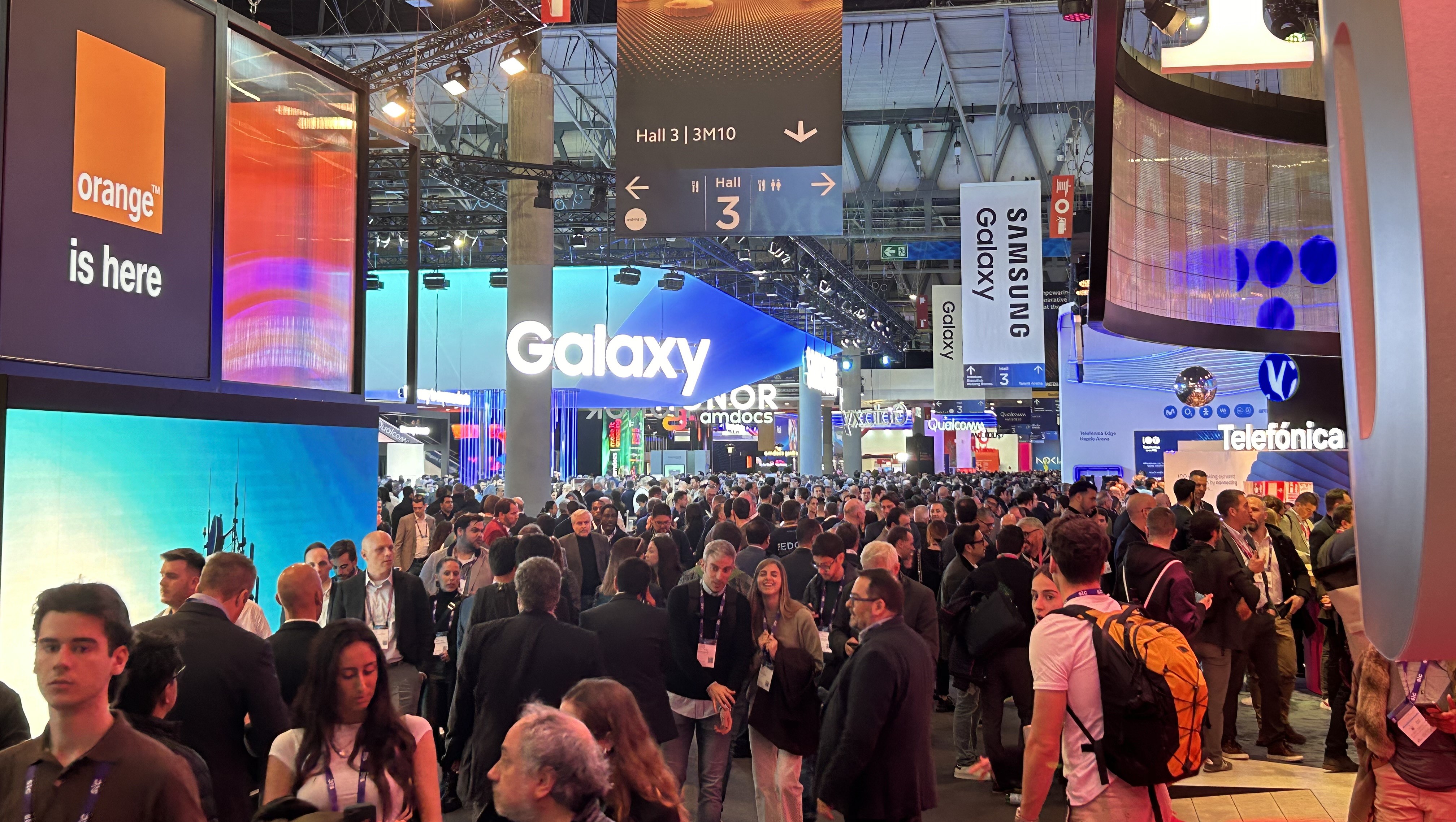
1) Demos, but not as we know them.
The trend to build benefit-led versus traditional ‘screen only’ tech demos continued apace this year with increasing numbers of exhibitors coming up with smart and engaging ways of showcasing what they enable in memorable ways, rather than just focusing on the how. The best of these combined appealing design, meaningful storytelling and emotionally resonant interactivity. Hands-on experiences appeal to our human nature, igniting a different part of our brain, encouraging deeper engagement and staying with audiences long after they’ve left.
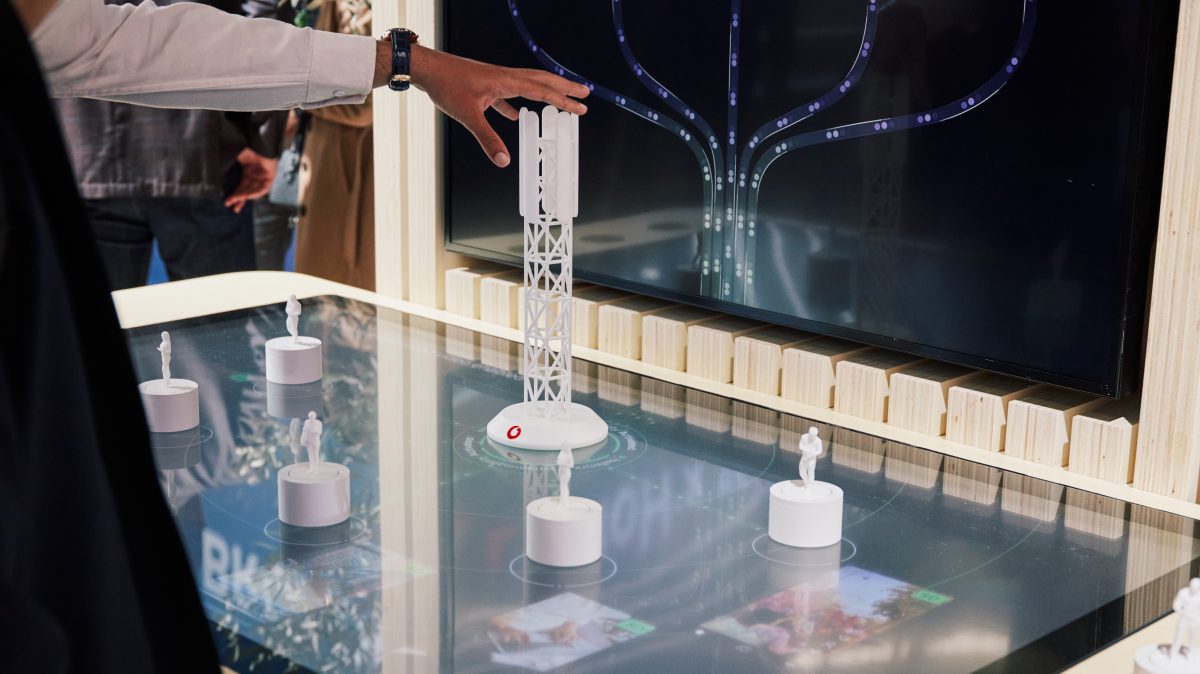
2) Give your visitors a multi-sensory break.
The show floor is increasingly an assault on the senses with LED walls equally ubiquitous as AI. Advances in neuroscientific understanding show this overstimulation can saturate our working memory functions, leaving visitors and staff alike in less than perfect condition for the all important deal-making conversations that pay for the whole shebang.
Traditionally, Hall 2 at MWC has been a calm and quiet place focused on high-level networking and sales conversions and, after recent attempts to liven it up, it returned to its roots this year with Ciena’s panoramic canopy stealing the show. It was a reminder that brands and agencies need to think about how they transition guests from attention to intention elsewhere.
On a large scale, Huawei created a beautifully serene front of house space still alive with technological possibilities, while many others, like e&, had exquisitely calm, elegant and non-branded spaces behind the digital curtain to prime and prep VIP guests. In a space where the back of house carries equal responsibility to the ‘attractor’ moment in the overall success of the experience, those with considered journeys, materiality choices and careful branding and space planning shone through.
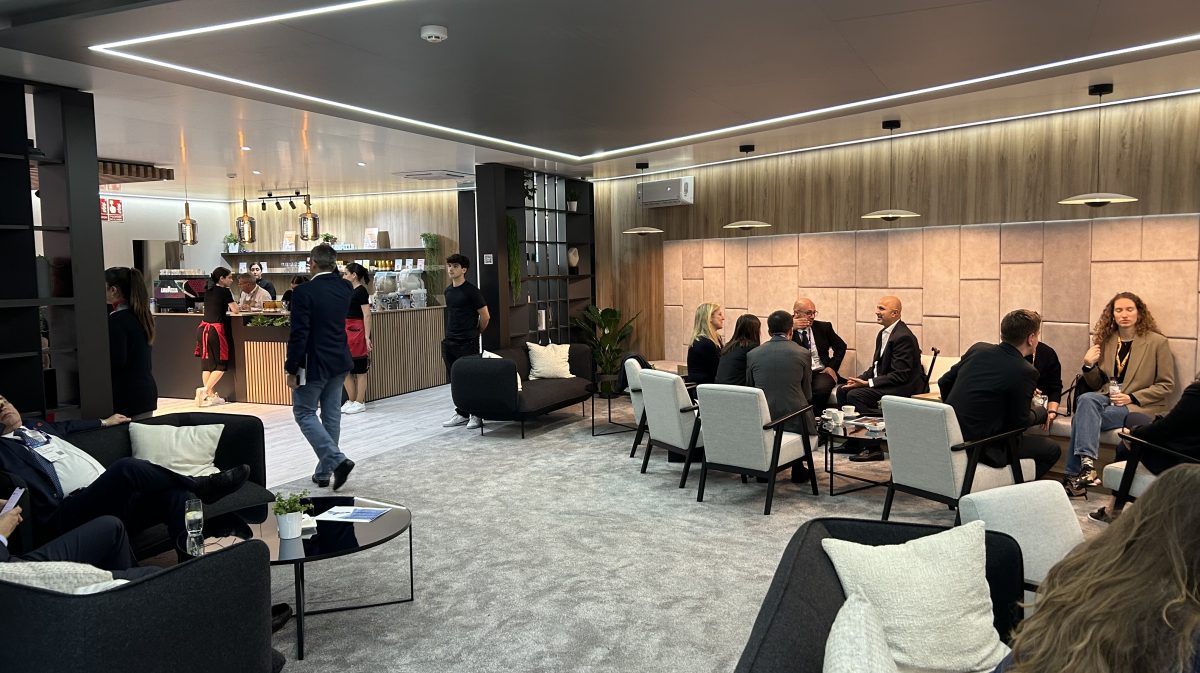
3) Time well spent.
We live in an attention economy with limitless ways to spend our time, yet human lives are not infinite so we are literally paying with our lives for the experiences we choose. Viewed through a philosophical lens, brands who recognised this honour and responsibly provided personalised and curated experience pathways for audiences won out. Whether visitors were skimming, dipping or diving, the successful brands understood their audiences well enough to provide layered experience opportunities so visitors could quickly identify and access content and experiences that were relevant and useful. If the time spent was truly valuable, they’ll be willing to invest further time so that both parties get a higher return later.
T-Mobile have long been the kings of this and continued to raise the bar with their cleverly zoned and vignette-based experience, accommodating content moments, gamified activations, immersive AI demos and self-discovery moments.
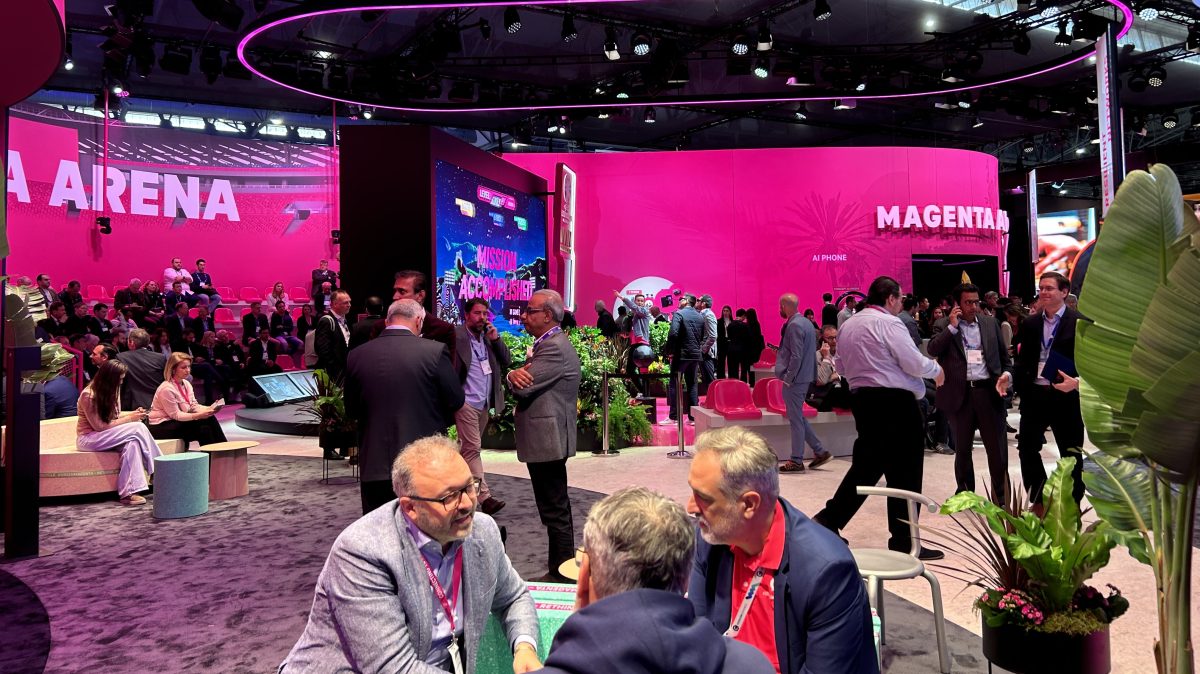
4) The sustainability problem.
Taken in isolation, events like MWC raise lots of questions on sustainability – those 40 football fields of space rise and fall in weeks and the majority of those 101,000 visitors fly in. But the organisers are taking significant steps forward. MWC is recognised as setting new standards in sustainability and has been the world’s largest carbon neutral event for 10 consecutive years.
Also, many exhibitors and visitors can have more meetings in that one week off the back of a single flight, than they might achieve over nine months and multiple flights. Sure, it’s not perfect but it’s a reminder to squeeze all the juice from participating in large industry events to create offset savings elsewhere.
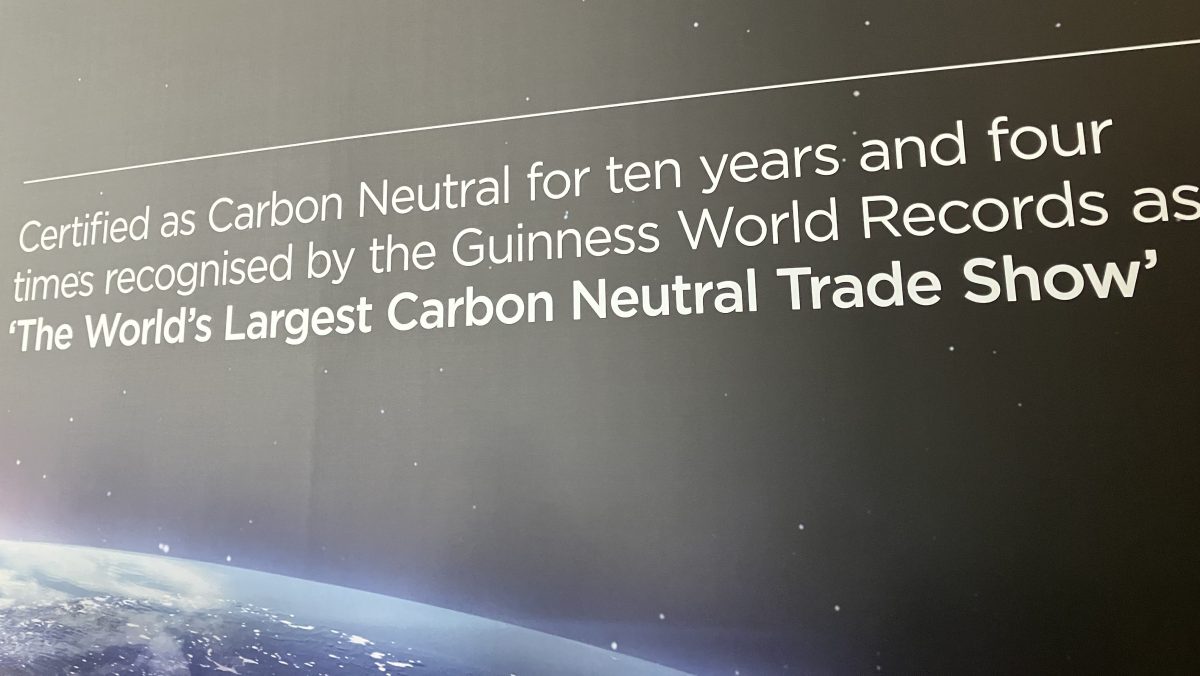
5) Emerging tech for the brand experience space.
Bendy phones, AI everywhere, robot baristas, transparent laptops, kinetic LED walls and the growing whisper of 6G connectivity were just some examples of the tech being showcased, talked about or used at MWC. But the one we wanted to see most was the Humane AI Pin. It didn’t feel like the phone killer some have predicted but could a wearable AI assistant be part of the brand experience landscape in the future? A camera you don’t have to hold to share content and experiences with colleagues who can’t make it. Translation capabilities to help international audiences engage and understand more clearly and deeply. And built-in GenAI capabilities providing information in a conversational way. It’s not hard to imagine something like this being too far away now.
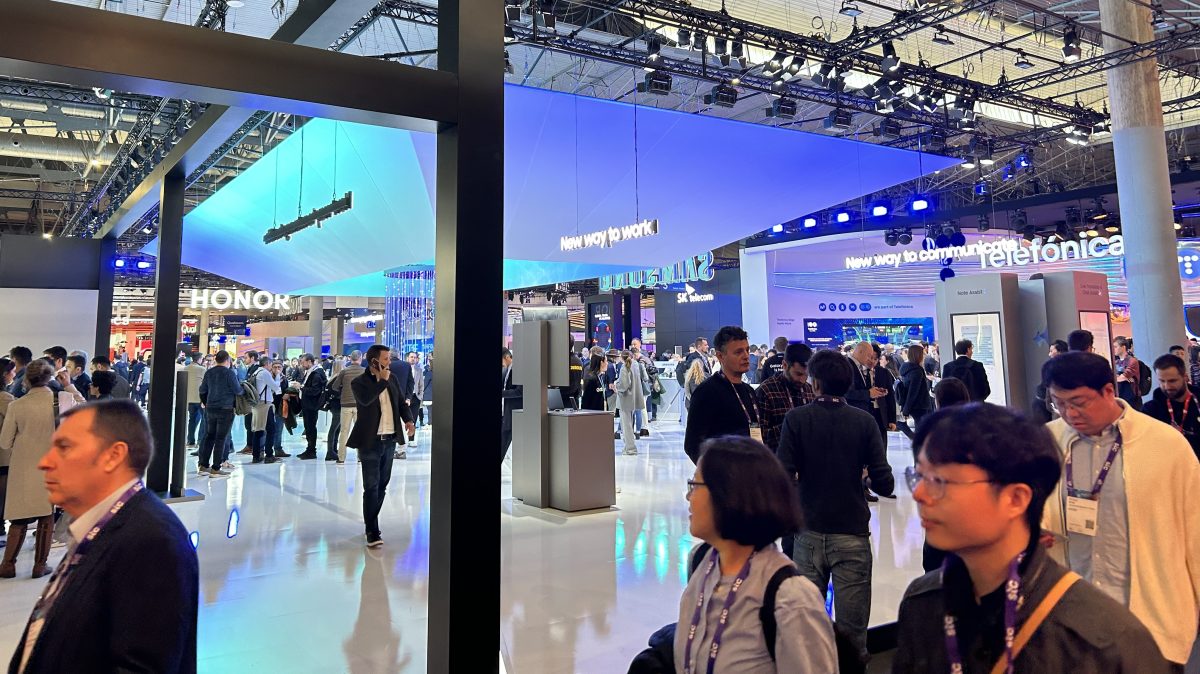
In our estimation, MWC Barcelona ‘24 was a resounding success. Another show bouncing back from the lost COVID years, stronger than before and proving that despite the march of so much brilliant technology we still crave in-person human experiences, above all else.
Let’s talk.
If you’d like to discuss supercharging your brand experiences, contact us to make the most of moments that matter.
More reading:
The future of events with GSMA VP of Sales, Sarah Wiggin
Web Summit: More than just AI? Five key themes
Advertising Week New York ’23: Seven brands we need to talk about